Salt March
Aakash Mittal
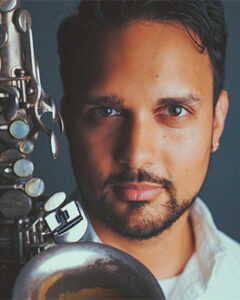
While the heart and soul of Salt March For Wind Ensemble is a tribute to Mohandas K. Gandhi’s historical protest and the music of that moment, fragments of the marching music prevalent during my childhood are woven into this composition. When I was eleven years old and still living in Dallas, Texas, I joined a Civil War-era fife and drum band. Around the same time that I was playing the Battle Hymn of the Republic on fife, I also began playing clarinet in my school’s wind band. This marked the beginning of a decade-long experience playing marches by Sousa, Grainger, and Berlioz. Cemented by four years of competitive high school marching band, marching in local parades, and playing marches at the town’s veterans club, the march became ingrained in my musical DNA. The march became part of my life again during the 2020 pandemic. Black Lives Matter and the Women’s March spotlit the power of the march as an effective type of non-violent protest that is still in use today. As the pandemic raged on, the idea of expressing our current climate of activism by writing a piece about Gandhi’s Salt March came to mind again and again. I wanted the piece to be an opportunity to study an important point in history and remind students that they already have the power to make positive change in the world.
My intent for Salt March was to remind us of where we have been and relate that history to the activism taking place right now. Salt March For Wind Ensemble is a contemporary imagining of the 1930 protest rather than a historically accurate rendering. However, I wanted to arrange a song that was sung during the original march to nestle a seed of that history in this piece. As many others have, I assumed that Gandhi and his followers sang during the historic journey. Photographs taken of the event clearly included musicians holding instruments. However, I struggled to find written references to any of the songs or music of that moment. It was at this point in my research that my cousin Gourav Venkateswar pointed me toward the devotional song Ragupati Raghava Raja Ram. Now the floodgates had been opened! I found reference upon reference corroborating that, indeed, Gandhi and his collaborators sang this song during the Salt March.
As I read about Gandhi’s work, I discovered he was quite a proponent of music. Politically, he believed that “in true music there is no place for communal differences and hostility.” This was further highlighted in a letter Gandhi wrote to the music teacher in the Satyagraha Ashram, Sabarmati, stating that “I have gradually come to look upon music as a means of spiritual development… Music is a constructive activity, which uplifts the soul.” Gandhi’s regard for music as a vehicle for spiritual development and political activism resonates with me and informed the writing of Salt March. The piece is as much an expression of the inner journey one must undertake to transform oppressive systems as it is about the power of communal protest. It is also about the idea that joy, celebration, and healing are revolutionary forces in and of themselves. Therefore, this piece is quite simply a catchy melody over some grooving drum beats. I hope you enjoy the music.
– Program Notes by composer
Into the Sun
Jodie Blackshaw

Into the Sun is a scrapbook of stories told by many of their passage to Australia, whether it be as free settlers in the 1800s, post World War II immigrants or refugees seeking asylum with a focus on those who came to the Western Sydney region. It is roughly in six sections: Arrival; A New Land, a New Life; Camps & Confusion; Acculturation: A Yearning for Home and All That is Familiar; Opportunity: With New-Found Enthusiasm; Reflection: With a Feeling of Inner Peace of Calmness.
Into the Sun was written to raise awareness regarding be plight of refugees. Whilst the stories used pertain to people gaining residency in Australia, they remain universal. Students are able to read real-life stories that the composer has used as inspiration and directors have the opportunity to explore more localised stories within the context of their own country with their students. Tolerance comes from understanding and it is the composer’s desire for all people to love one another. This piece was written to encourage all children to gain an understanding of the desperate situation so many refugees are placed in and how important it is to help them when and where possible.
– Program Notes by composer
Folk Suite
William Grant Still
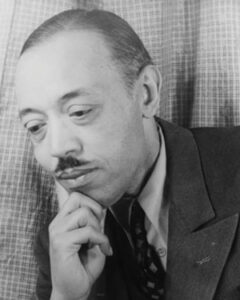
William Grant Still (1895-1978) is known for his settings of traditional spirituals. Folk Suite for Band (1963), is one of the latter . Each movement features creative, solo-filled arrangements of traditional spirituals in which the music almost paints an aural image of each spiritual’s context. The first tune, Get on Board, Little Children, is accompanied by incessant rhythmic passages imitating the rattling of a train in motion. The second movement, Deep River, includes a vocal-like, sustained accompaniment with written stylistic breaths imitating a vocalist. The final movement features two spirituals: The Old Ark’s a Moverin’ and Sinner, Please Don’t Let This Harvest Pass. Multiple soloists interrupt sections of ensemble playing in an almost preacher-like fashion. The contrasting moods of the spirituals, joyful and pensive, are reflected in the accompaniment and the work comes to a celebratory, almost dance-like finish.
– Program Notes adapted from Florida State University Wind Ensemble concert program, 22 February 2022
Of Endless Miles and Empty Rafts
Michele Fernandez
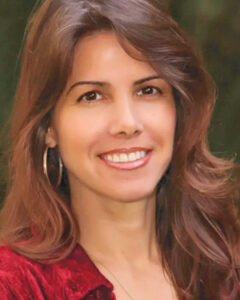
Throughout time and regardless of origin, immigrants have shown a spiritual courage and resolve to survive that has found countless families suffering perilous journeys in search of safety. Many have been lost along the way. As a child of Cuban parents who fled oppression (leaving much behind to build a new life), my respect and empathy for all immigrants runs deep. Although my parents’ (still traumatic) exoduses were not by sea, several family members’ and friends’ journeys were. Throughout my life I have heard stories of near losses and rafts washing ashore, empty. I still recall the feelings since childhood — wondering who they were, and what happened to them.
This piece is in no way intended as a contemporary statement, rather as an empathic look at humanity’s struggles to protect innocent families throughout history, and a tribute to my own ancestors’ courage. Many of us are descents of immigrants at some point in our deep histories, regardless of era, or origin. During my 30 years as a public school teacher in Miami, I had countless (precious) students who suffered trauma from the dangers of their immigrant journey, and so this original composition honors displaced souls from all eras and walks of life, irrespective of hemisphere — who have fled homes, to anywhere, in search of safety for themselves and their children.
The piece is written using two authentic Afro-Cuban forms: Guaguancó and Son-Montuno. In this work, many authentic patterns are woven into the fabric of the winds as well. No prior knowledge of Afro-Latin forms is needed to achieve an authentic performance, as percussion parts are carefully crafted using a personally developed, simplified method to achieve authenticity quickly. Each brief section represents elements of an immigrant’s story.
1. Opening Chorale: Depicts a treacherous journey, for example, as seas toss about a small raft and its occupants. At the end of the chorale, the listener can almost visualize someone falling overboard and descending into the depths with others still in the raft, crying out with reaching hands as rain and darkness beat down.
2. Guaguancó (3/2 Rumba Clave): A seamless flashback to a memory; this dignified soul at home, living peacefully.
3. Son Montuno (2/3 Son Clave): Still a flashback — urgency sets in at home as turmoil intensifies into a pursuit, and the courageous decision to flee from danger comes to the forefront. The piece returns to the present (remaining souls), and the intense finale depicts the will of the human spirit to survive and carry on to thrive and contribute, now in their new home — in honor of their lost loved ones’ memories and courage.
– Program Notes from score
Variations on a African Hymnsong
Quincy C. Hilliard

The piece is based on a Nigerian folk song; fragments of the hymn song appear in the beginning and then the hymn song itself is introduced around the middle of the piece by the oboe. The piece also features two polyrhythms in the percussion that are based on authentic African rhythm patterns. The first polyrhythm comes from another African hymn entitled Kyrem. The second is based on the rhythm pattern called “Osebo.”
– Program Notes from University of Wisconsin – Eau Claire Symphony Band concert program, 27 April 2018
Moonlight Dragon
Yasuhide Ito
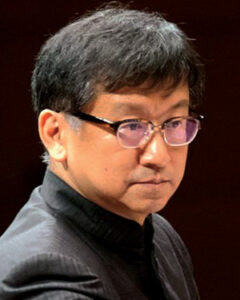
Some years after graduating college, the composer received a postcard from a high school classmate who visited the port of Hong Kong during his world travels. He wrote that the city of Hong Kong is chaotic, yet full of life and spirit. This reminded him of a quote, “Ma vie etait un festin” (My life had been a feast – A Season in Hell by French writer Arthur Rimbaud). Thereafter, the composer’s impression of Hong Kong is “a city of festivals”. This composition depicts his first impression and the city’s vitality.
This work was commissioned by the Hong Kong Band Director’s Association. It was premiered on September 14th, 2012, by the Hong Kong Band Directors Wind Orchestra under the baton of Ito himself at the “HKBDWO with Ito & HK Composers Concert”.
– Program Notes from publisher
Breath of the Mountains
Cait Nishimura

Breath of the Mountains was commissioned by Sam Yamamoto and the Lethbridge Collegiate Institute Gold Symphonic Band. Lethbridge is located in Southern Alberta, where the landscape and climate are shaped by powerful warming winds called chinooks coming from the Canadian Rocky Mountains. In addition to these winds, Lethbridge is known for having more than 320 days of sunshine each year.
When writing this piece, I reflected on my time visiting Lethbridge in 2020 (my last pre-pandemic residency) where I had the opportunity to connect with the welcoming music community and also experience the warm sunshine and expansive, powerful winds that define this part of the province. I began thinking of the wind as a life force; an expression of aliveness coming from the mountains in the form of birdsong, flowing water, hills and valleys, and sparkling sunlight. And as I wondered what that wind would sound like, Breath of the Mountains was born.
– Program Notes by composer
Roma
Valerie Coleman
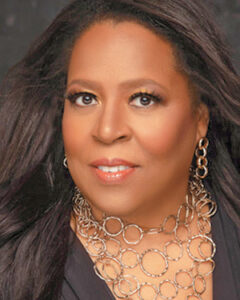
A nation without a country is the best way to describe the nomadic tribes known as gypsies, or properly call, the Romani. Their traditions, their language (Roma), legends, and music stretch all over the globe. from the Middle East, the Mediterranean region, and the Iberian peninsula, across the ocean to the Americas.
Roma is a tribute to that culture, in five descriptive themes, as told through the eyes and hearts of Romani women everywhere: Romani Women, Mystic, Youth, Trickster, and History. The melodies and rhythms are a fusion of styles and cultures: malagueña of Spain, Argentine tango, Arabic music, Turkish folk songs, 3/2 Latin claves, and jazz.
– Program Notes from score
